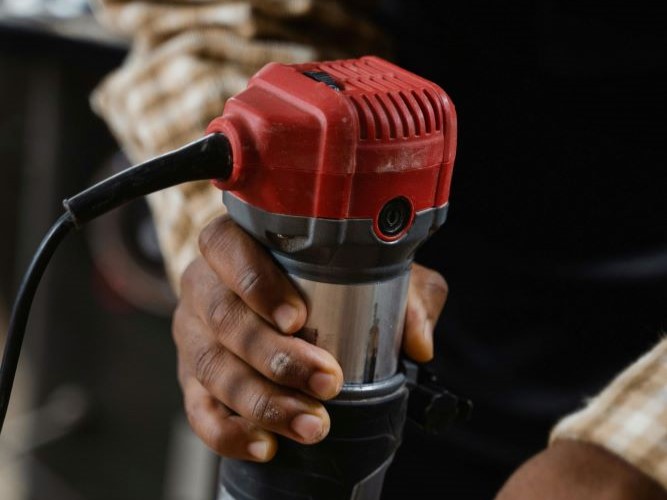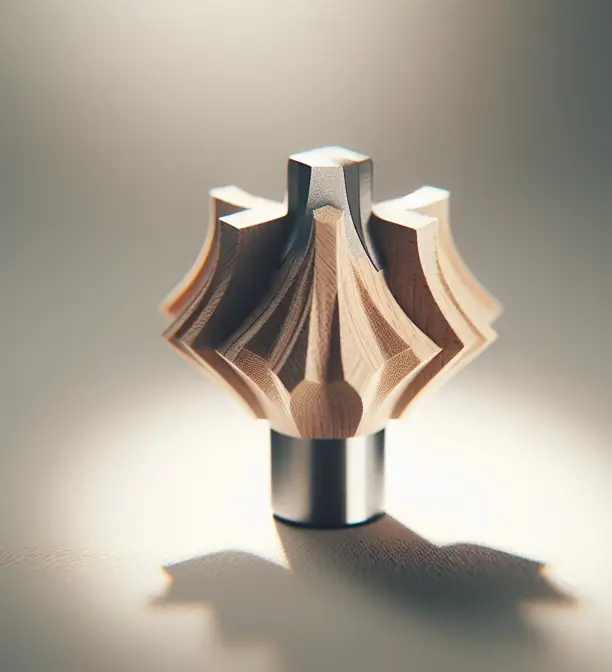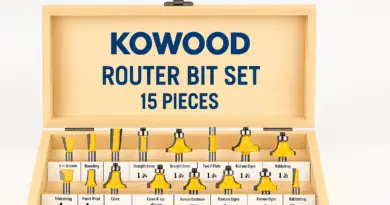Shaper vs Molder: Which Tool is Best for Your Woodworking Needs?
Are you tired of struggling to choose between a shaper and a molder for your woodworking projects? You’re not alone. Many woodworkers face this dilemma, as both tools offer unique advantages for shaping and molding wood.
But which one is the best fit for your specific needs and skill level? In this post, we’re going to let you dive deep into the world of shapers and molders, exploring their key differences, strengths, and weaknesses. We’ll also provide practical guidance to help you make an informed decision based on your project requirements and experience. Whether you’re a seasoned pro or a beginner, understanding the capabilities of each tool is crucial for achieving the best results. So, let’s sharpen our knowledge and discover which tool will take your woodworking to the next level!
Key Takeaways:
-
- Shapers use a stationary cutting tool to shape wood.
- Molders use multiple moving knives to create more complex designs.
- The main advantage of using a shaper is its ability to produce consistent cuts over long periods of time.
- Molders are perfect for creating unique shapes and patterns in your woodworking projects.
- You can achieve similar results with both machines, but it ultimately comes down to personal preference and the specific needs of your project.
- No matter which machine you choose, make sure you prioritize safety by wearing protective gear and following proper usage guidelines.
Shaper vs Molder: Which One Should You Choose?
When it comes to woodworking, shapers and molders are two popular power tools for creating decorative edges and profiles on wood. Both machines can be used to shape and mold wood, but there are some key differences between them that may affect your decision when choosing which one to use.
A shaper is a stationary machine that uses a rotating cutterhead mounted on an arbor to cut the wood. It can create straight cuts, curves, angles, and other intricate shapes with precision. On the other hand, a molder is also a stationary machine that has multiple cutterheads arranged in sequence to produce various shapes along the length of the board.
So which one should you choose? It depends on what you need it for. If you’re looking for versatility in shaping different types of wood with complex designs or patterns, then a shaper would be your best bet. However, if you’re working with large quantities of uniform pieces such as molding or trim work, then a molder might be more efficient.
In essence, both shapers and molders have their own strengths and weaknesses when it comes to woodworking projects. Here are some points to consider:
– Shapers offer greater flexibility in terms of cutting designs.
– Moldings require less setup time than shapers.
– Shapers tend to produce smoother finishes compared to molders.
– Molded parts can be produced at higher speeds than shaped parts.
| Feature/Aspect | Shaper | Molder |
|---|---|---|
| Primary Use | Creating unique shapes and intricate designs | Producing consistent cuts along the length of boards |
| Flexibility | High flexibility with cutter selection and custom cutters | Limited to pre-set cutter arrangements |
| Ideal For | Small runs of custom molding or trim work | Large quantities of identical pieces |
| Cost | Generally more expensive due to versatility | Typically less expensive |
| Precision | Offers precision for detailed work | Provides consistency and precision for uniform pieces |
| Customization | Allows for more customization in designs | Best for repetitive, uniform tasks |
| Tool Orientation | Vertical spindle | Horizontal feed system |
| Project Suitability | Best for intricate, one-of-a-kind projects | Best for high-volume, repetitive projects |
Major Differences Between a Shaper and a Molder
A shaper and a molder are two different woodworking tools that serve distinct purposes. While both machines are used to shape wood, their methods of operation differ significantly.
A shaper is a stationary machine with a spindle that holds the cutting tool. Shapers use straight knives or cutters for making cuts in wood, typically producing simple shapes such as grooves, tenons, and rabbets. They also have adjustable fences or guides to ensure precise cuts.
On the other hand, a molder operates by feeding rough lumber through rotating cutter heads. The machine has several spindles with multiple knives that can make various cuts simultaneously. This results in more complex designs like custom moldings, flooring materials, and paneling.
Are Shapers or Moldeders Better for Small Woodworking Projects?
When it comes to small woodworking projects, the choice between a shaper and a molder can be confusing. A shaper is ideal for creating unique shapes, while a molder is better suited for consistent cuts. Ultimately, the decision depends on the project requirements.
If you need to create intricate designs or one-of-a-kind shapes, a shaper is your best bet. Shapers have more flexibility in terms of cutter selection and can accommodate custom cutters as well. On the other hand, if consistency and precision are key factors for your project, then a molder might be better suited.
In essence, both tools have their own advantages and limitations. While shapers are versatile and perfect for small runs of custom molding or trim work, molders are great when you need to produce large quantities of identical pieces quickly.
It is worth noting that cost plays an important role too. Shapers tend to be more expensive than molders due to their versatility and customization options.
To wrap things up, before choosing between a shaper or molder for small woodworking projects consider the nature of your project – its intricacy level versus quantity requirement- as well as cost factors . I would recommend consulting with an expert before making any investment in either tool so that you can make an informed decision based on your specific needs.
Can You Use Both a Shaper and a Molder in Your Workshop?
Yes, you can use both a shaper and a molder in your workshop. In fact, there are benefits to having both machines available for different woodworking projects.
A shaper is best suited for creating cuts that run parallel to the edge of the board. It’s perfect for cutting grooves, molding edges, and shaping curves. A shaper provides precision cutting with higher speeds than other machines.
On the other hand, a molder specializes in producing intricate profiles or patterns on woodwork. It’s ideal for cutting moldings such as baseboards, casings or crown moldings. The machine has multiple cutters that allow it to create more detailed designs than a shaper.
By having both machines available in your workshop, you’ll have access to all types of cuts and designs needed for different projects. Combining their features will give you versatility while working on various woodworking jobs without compromising quality.
In essence, having both shapers and molders together increases efficiency while providing flexibility.
Pro tip: Before purchasing either machine make sure they’re compatible with each other so you can interchange cutter heads if necessary.
Which Tool is More Versatile: A Shaper or a Molder?
When it comes to woodworking, shapers and molders are two popular tools. Both have their own advantages and disadvantages, but the question remains: which one is more versatile?
In essence, a shaper is designed for shaping wood by cutting it with a spinning cutter head. It’s great for creating intricate profiles and decorative edges on pieces of wood. On the other hand, a molder is used to produce large amounts of molding quickly and efficiently.
While both tools have their strengths, the answer to which one is more versatile depends on your specific needs as a woodworker. Here are some points to consider:
– A shaper can handle smaller pieces of wood than a molder.
– A molder can produce multiple types of molding profiles in one pass, whereas a shaper requires changing out cutters for different profiles.
– Shapers come in handheld or stationary versions, while molders are typically only stationary.
– If you need to create unique shapes or designs on your woodworking projects, then a shaper may be the better choice.
– If you’re producing large quantities of identical molding pieces, then a molder may be more efficient.
What Are the Pros and Cons of Using a Shaper Instead of a Molder?
Shaper vs Molder:
When it comes to woodworking, a shaper and a molder are two popular tools used for shaping wood into various designs. While both have their advantages and disadvantages, choosing which tool to use depends on the specific needs of your project.
The pros of using a shaper include:
-
-
- Versatility: Shapers can handle larger pieces of wood than molders, making them suitable for bigger projects.
- Precision: A shaper’s cutting head is adjustable, enabling users to create precise cuts that match their desired specifications.
- Flexibility: Shapers come with a variety of different cutter heads that allow users to work with different types of materials such as hardwoods or softwoods.
-
The cons of using a shaper include:
-
-
- Cost: Compared to molders, shapers are generally more expensive due to their versatility and precision capabilities.
- Safety concerns: A shaper can be dangerous if not handled correctly. The user should always wear protective gear such as goggles or earplugs when working with this tool.
-
The pros of using a molder include:
-
-
- Ease-of-use: Molders are easy-to-use compared to shapers since they operate on set patterns that produce consistent results every time.
- Affordability: Molders tend to be more affordable than shapers because they have fewer features and capabilities.
-
The cons of using a molder include:
-
-
- Limitations: Molders are limited to a specific set of patterns, meaning users cannot create custom designs without purchasing new patterns.
- Limited material compatibility: Molders can only work with certain types of materials and thicknesses, making them less versatile than shapers.
-
How Do You Decide Whether to Invest in a Shaper or Molder for Your Business?
When deciding whether to invest in a shaper or molder for your business, there are several factors that should be considered. Here are some points to keep in mind:
1. Type of products: The type of product you want to manufacture will play an important role in determining which machine is best suited for your needs. If you need to create complex shapes with intricate details, a shaper may be the better option. However, if you need to produce uniform parts at high volumes, a molder may be more appropriate.
2. Budget: Both shapers and molders can represent a significant investment for any business owner. Before making a decision, it’s important to consider your budget and how much you’re willing to spend on this equipment.
3. Skill level: Operating either of these machines requires skill and experience. If you don’t have the necessary expertise within your team, you’ll need to factor in training costs as well.
4.Maintenance requirements: Shapers tend to require more maintenance than molders due to their moving parts and complexity of operation.
In summary,
– Consider the type of products you want to make
– Determine your budget
– Assess the skill level of your team
– Evaluate maintenance requirements and costs
Pro tip: Consult with experts in the field, read reviews carefully before making the final decision on whether to invest in a shaper or molder.
What Safety Precautions Should You Take When Working with Either a Shaper or Molder?
When working with a shaper or molder, it is important to take certain safety precautions. Here are some things to keep in mind:
1. Wear protective gear: This includes safety glasses, ear protection, and gloves.
2. Keep your work area clean: Make sure there is no debris or clutter around the machine that could cause an accident.
3. Use proper techniques: Always use the correct feeding technique when working with either a shaper or a molder.
4. Keep your hands away from moving parts: Never put your hands near any of the moving parts while the machine is running.
5. Avoid loose clothing and jewelry: Loose clothing can get caught in the machine, causing injury.
6. Follow manufacturer instructions: Make sure you read and understand all instructions before operating either a shaper or molder.
Final Thoughts
To wrap things up, it is essential to understand that both shapers and moulders have their unique benefits. Shapers are an excellent choice for those who work with intricate designs, while moulders are perfect for creating consistent shapes quickly. However, the final decision depends on your specific needs and preferences.
All in all, choosing between a shaper and moulder can be challenging, especially if you’re new to woodworking. In essence, it would be best to assess your project requirements carefully before making any decision. I would recommend trying out both tools before investing in one or the other.



